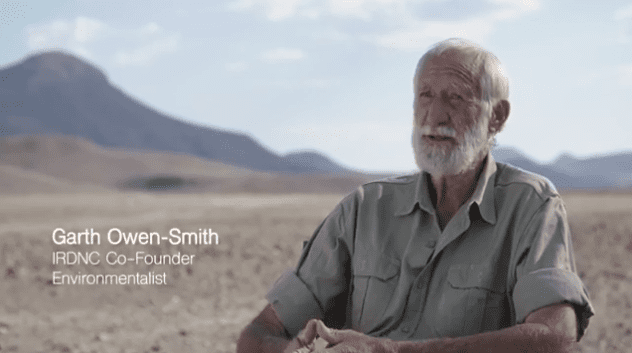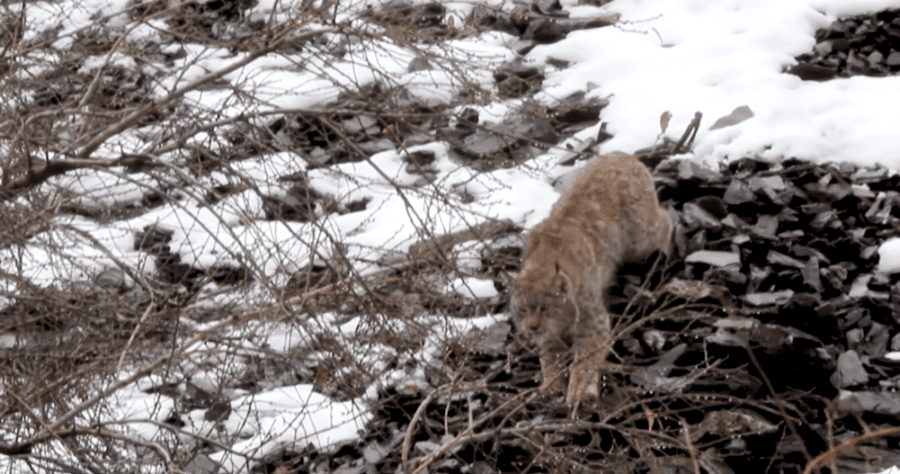Our North American Editor’s take on a sometimes controversial subject.
Hunting comes up in so many articles in this issue that it seems appropriate to talk about the form of it that causes the most outrage among people who believe that we humans should no longer kill wild animals: trophy hunting. But there are other kinds of hunting too, and no shortage of misconceptions and even ironies. For our many non-hunting readers, we’d like to address all this, at least briefly. Let’s go to the dictionary first—
Trophy: A “tangible, durable reminder of a specific achievement that serves as a recognition or evidence of merit; something gained or given in victory or conquest, especially when preserved as a memorial.” My son’s basketball figurine from high school is a trophy; so is the 14-point set of antlers from a Scottish hill stag on the wall behind me. Both had to be earned; neither came easily; one of them fed several families several times.
Other definitions: A game animal is one that’s hunted; it’s a wild animal, not a domesticated one found on a farm. Commercial or market hunting is carried out for meat, ivory, antlers, horns, skins, feathers or some other part of a wild animal to sell. (This is generally illegal. The bushmeat trade in Sub-Saharan Africa involves market hunting; so does supplying tiger bone—and so many other animal parts—for traditional Chinese medicine.) Poaching is the unlawful killing or capture of any kind of wildlife.
Subsistence hunting is foraging—hunting for food out of necessity. Culling means rapidly thinning out animals because there are too many for the habitat or because an area is to be cleared for agriculture or other development. It can also refer to high-volume commercial shooting for meat. Control hunting is to destroy a specific “problem” animal that has attacked livestock, crops or people. None of this is fair chase hunting; instead, the goal is to be quick and effective, and so the rules are different. Culling and control hunting are usually carried out by certified professionals.
Recreational hunting
By far the greatest portion of hunting today is recreational or sport hunting: Done by duly licensed citizens, using only certain types of weapons, on designated lands and at designated times of year (“hunting season”) and day (not at night, typically) and for a set number of defined animals such as tom turkeys or buck deer, or male lions that have reached a certain age or Marco Polo rams with horns of a certain size. The goal may be meat or trophies or both.
The notion of hunting only males comes from the ancient desire to sustain species by sparing breeding females. But if the population of a game animal is too large for its habitat, hunters may be allowed to kill females as well as males, or more than one. This is common in Europe and becoming more so in North America.
Every aspect of sport hunting—species, sex, age, number, region, season, weapons—including the “off-take” is carefully set by wildlife managers and based (ideally, anyway) on scientific data. Hunters pay the wildlife owners—regional governments and/or communal or private landowners—for this privilege, in license or trophy fees that can range from pocket change to hundreds of thousands of dollars, euros or pounds. In many parts of the world, this money pays for conservation programs.
Hunting for meat
Most hunters make a point of eating their game, and they use this as one of their reasons for hunting. Of course, one of the benefits of civilization is that we no longer need to kill and butcher our own meat; a vast industry has been created to do it for us. Therefore some people insist that because it’s no longer necessary, and they believe it to be cruel to boot, hunting should be banned.
(Speaking of cruelty, I should point out that four-legged predators such as wolves, bears and big cats were wiped out in much of the civilized world specifically for the benefit of people who raise cattle, pigs, chickens and sheep for slaughter.)
Most people, including those who would ban hunting, buy meat from a market, wear leather shoes and belts and carry leather handbags—all products of the livestock industry. Few people give any thought to how cows are converted into beef and hides. They may not understand hunting, either, or the relationship between hunting and conservation. They may even believe, as animal-protectionists claim, that hunters enjoy killing. (In fact, most do not—but if they don’t do it, they’re not hunters.) And many people seem to believe that hunting is no more challenging than strolling into the forest and firing a bullet or arrow in the direction of an animal.
Trophies
Then there’s trophy hunting, with all its emotional baggage among people who love animals—and who doesn’t love animals? To many people, trophy hunting is emblematic of our planet’s ills, nothing more than despoiling nature for the sake of greed and vanity. To an honest sportsman and woman, however, trophy hunting means finding and killing (I don’t like the word “harvesting”) the most difficult-to-attain example of an elusive, sometimes dangerous wild animal, as an exemplar of expertise. Fair-chase hunting demands some physical fitness and woodcraft, a certain steadiness under pressure, skill with a gun or a bow, and time—often weeks.
Man not only evolved as a predator, but also a competitor. (The two are almost, but not quite the same thing.) The larger a rack of antlers or the heavier a pair of tusks or the bigger a bearskin, the more we value them. “Mine is bigger than yours,” so I am a better hunter than you—a better provider. This ethic is alive and well in urban life and on the playing fields too, where ultimately earnings are the trophy, proof of the ability to care for the family. An eland “blue bull,” a championship ring or a big paycheck: all are meaningful tokens of achievement.
This is a complex issue but, recognizing that the biggest animals may be the healthiest and most valuable genetically, hunters—or the agencies that regulate hunting—are re-defining “trophy” by age, not by size. A Cape buffalo with the widest spread of horn (the common measure of a trophy) is likely to be in the prime of life, still procreating madly. Today’s trophy buffalo is an impressive older bull with time-worn horns that has made its contribution to the gene pool (left behind many offspring) and is nearing the end of his life, that day when a pride of lions pulls him down in a long and painful process.
Although trophy hunting isn’t strictly hunting for food, the meat is not wasted. Pheasant or elephant, it is brought home or given to a nearby village, eaten by the hunter and camp staff, or taken to a butcher shop to be sold. The exception may be certain predators; wolves or cats. (Many people won’t hunt predators.)
Hunting a trophy animal often calls for many days in the field, with hard work and sweat, frustration and disappointment before success—if success comes at all. Trophy hunting is not killing a deer, it is killing the deer, and this makes all the difference. If we succeed, the trophy, the “tangible, durable reminder of a specific achievement” (horns, antlers, skull or hide,) is part of the reward. Keeping a trophy is as natural as hunting itself, and it should be a sign of respect for the animal and even for ourselves. A trophy is a talisman and a remembrance of days in the field and the rare experience, the awe and excitement and sometimes fear of being a natural predator again.
It is true that outstanding trophies have been taken easily, by sheer luck, sometimes within steps of camp. And when money is involved, people may take shortcuts: Ranchers or breeders buy or raise animals with bigger horns or longer manes or whatever and pen them up so that their clients can kill them easily and at no risk. This is the opposite of fair-chase hunting—it’s anti-trophy hunting. Unfortunately, such “hunters” often have to show off on social media, too. Hunters can be their own worst enemy.
Ethics & access
Which is more humane and environmentally sound: Stalking and killing an elk in its habitat with a well-placed bullet? Or buying a steak from a cow that was raised in a pen on chemically enhanced feed and then trucked to a factory where, crazed with fear, it was cut up on an assembly line? Which raises our awareness of the consequences and responsibilities of living in a natural system?
There are now too many people in the world for everyone to hunt their own organic meat; and it’s possible that slaughterhouses may treat animals better than they once did. But many hunters regard what they do as the most honest form of “shopping” for meat, just as many people grow their own vegetables in a garden. And, as gardeners take care of their fields and plants, hunters watch over their resources.
Other, system-wide benefits to hunting, and they can be significant, are covered elsewhere in this magazine. I’ll end by agreeing that some hunters behave egregiously, and that hunting is no longer for everyone. But for people who are able to accept that humans are natural predators, and who have the desire and the skills, it can be not only highly beneficial to conservation, but also deeply satisfying.
Silvio Calabi is North American Editor for Conservation Frontlines.
Banner image: A classic “dagga boy”—a solitary Cape buffalo bull, well past breeding age, that spends his days in the dagga, Zulu for mud, against parasites. Years of use have worn his horns down, so by the tape measure he is no prize, but wariness and aggression make him a challenge—a modern trophy. Jofie Lamprecht photo
The post Hunting, Trophy and Other–A primer for the non-hunter. It may—or may not—be what you think. appeared first on Conservation Frontlines.
The views expressed by the editors, authors or users of this linked article are expressly theirs, and do not necessarily reflect the policies or opinions of Dallas Safari Club, its employees, members or assigns. Any concerns about a site user’s post should be addressed appropriately to that person. Any concerns about an advertiser, a user or any content on this site should be addressed to social@dscnortheast.org.




